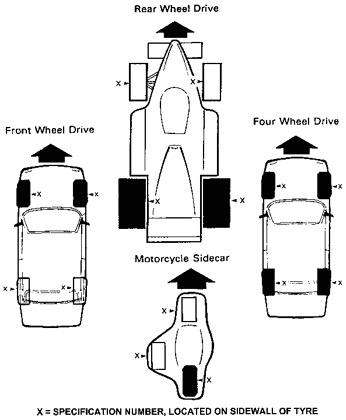Advice
Different competitors are able to use the proper tire differently. The durability and maintenance of tires depend mainly on two things - entry and storage.
Different competitors are able to use the proper tire differently. The durability and maintenance of tires depend mainly on two things - entry and storage.
For most purposes, racing tyres will benefit from an appropriate 'Scrubbing in' procedure. This provides the best combination of performance and longevity under race conditions. There are several difficulties that arise when using racing tyres if they are not scrubbed in prior to use. The most common is "Cold Graining", where the layer of the tread compound in contact with the track, fails in shear with the layer below. The result is a very visible low frequency, high amplitude rippling effect. This is more common with new tyres particularly when used in wet, damp or greasy conditions. Avon Tyres Motorsport recommends that a standard scrubbing in procedure be used whenever possible (conditions and regulations allowing). This consists of subjecting the tyres through one gentle heat cycle, gradually loading them up whilst avoiding drifting the car. This should take about three to four laps of a circuit where the lap time is in the region of 60 to 100 seconds. The last lap should only be about 80% race speed. If possible, scrub in at least one new set of tyres during free practice, and put these aside for the race. In this way you will know that they have been balanced correctly, and have no slow punctures etc. Getting this done early is important as the qualifying session may become wet or be red flagged, which could force the use of new tyres in a race. When regulations or circumstances do not allow the above procedure to be carried out, then the following should be borne in mind: - Graining of the loaded front tyre can be avoided if it is ensured that they are fully up to temperature before pushing hard. It is relatively easy to generate temperature in the driving tyres as they are transmitting power most of the time.
(x-rehvil paiknev spetsifikatsiooni number)

